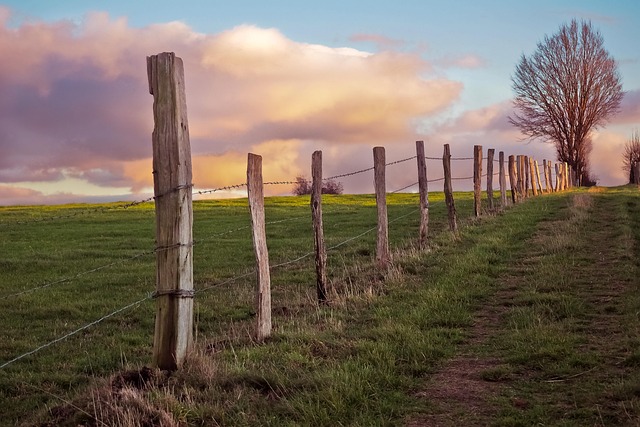In the quest for cost-efficient solutions, large property owners now have access to innovative fencing options that balance quality with affordability. This article delves into the multifaceted world of cost-effective fencing for expansive lands. We’ll explore tailored strategies, from selecting economical materials and design principles to installation best practices aimed at longevity. Furthermore, discover maintenance techniques designed to maximize the lifespan of your fence while keeping budget constraints in check.
- Understanding Large Property Fencing Needs
- Cost-Effective Materials and Designs
- Installation Tips for Longevity and Savings
- Maintenance Strategies to Extend Lifespan and Preserve Budget
Understanding Large Property Fencing Needs
Large properties present unique challenges when it comes to fencing, as the scale and diverse landscapes require tailored solutions. Each acre or hectare holds its own set of requirements, from enclosing vast pastures for livestock to creating privacy screens for residential areas or defining property boundaries. The primary goal is often a combination of security, aesthetics, and functionality, all while considering budget constraints.
Fencing these expansive spaces necessitates durable materials that can withstand harsh weather conditions and potential wildlife encounters. Furthermore, the design should integrate seamlessly with the natural terrain, either blending in or complementing it, to ensure both visual appeal and practicality. Cost-effective solutions for large properties often involve exploring innovative materials, efficient installation methods, and strategic design choices that maximise coverage without breaking the bank.
Cost-Effective Materials and Designs
When it comes to fencing large properties, cost-effectiveness should be a top priority. One way to achieve this is by choosing materials that offer both durability and affordability. Common options include treated wood, vinyl, and chain link fences. Treated wood is a popular choice due to its natural aesthetic appeal and resistance to rot and insects. Vinyl fencing is another budget-friendly option known for its low maintenance requirements and ability to withstand harsh weather conditions. Chain link fences provide maximum visibility and security while being highly affordable.
Design-wise, opting for simple yet functional styles can significantly reduce costs without compromising the property’s security or aesthetics. Straight lines and basic shapes are easier and cheaper to install than intricate designs with numerous curves and angles. Additionally, incorporating features like gates and posts strategically can enhance accessibility while maintaining control over who enters the property.
Installation Tips for Longevity and Savings
When installing fencing for large properties, focusing on longevity and cost-effectiveness begins with proper preparation. Clear the area of any debris or obstructions, ensuring even ground for a solid foundation. Digging posts deep enough into the soil is crucial; this provides stability against strong winds and weather conditions. Use high-quality materials, especially for the fence panels, to resist rot, rust, and damage from wildlife.
Regular maintenance plays a significant role in extending the life of your fencing. Regularly inspect the posts, rails, and panels for any signs of wear or damage. Keeping the area around the fence clean and free from debris prevents waterlogging, which can weaken wooden components. Applying protective coatings, such as sealers or paints, every few years can also protect against elements and save on future replacement costs.
Maintenance Strategies to Extend Lifespan and Preserve Budget
Regular maintenance is key to extending the lifespan of your fence, especially for large properties where the initial installation cost can be significant. A well-maintained fence not only enhances the curb appeal but also ensures it remains functional and secure. Start by establishing a routine cleaning schedule, using mild detergent and a soft brush to remove dirt and debris. Inspecting the fence periodically is crucial; look out for any signs of damage, rot, or corrosion, addressing them promptly to prevent small issues from turning into big problems.
Consider a preventive approach by applying weatherproof coatings and sealers annually, especially in regions with harsh climates. These steps will protect the fencing material, prolong its life, and save you money in the long run. Additionally, trimming nearby trees and shrubs will keep them from growing over the fence, causing damage and requiring frequent repairs.
